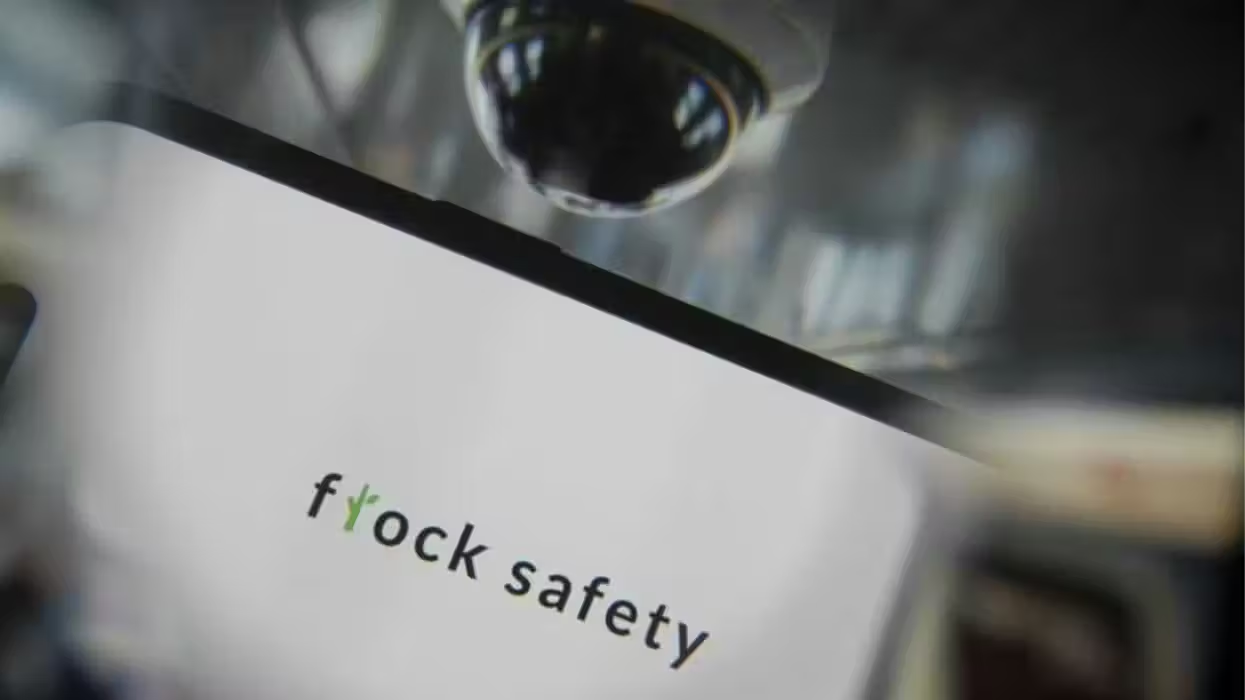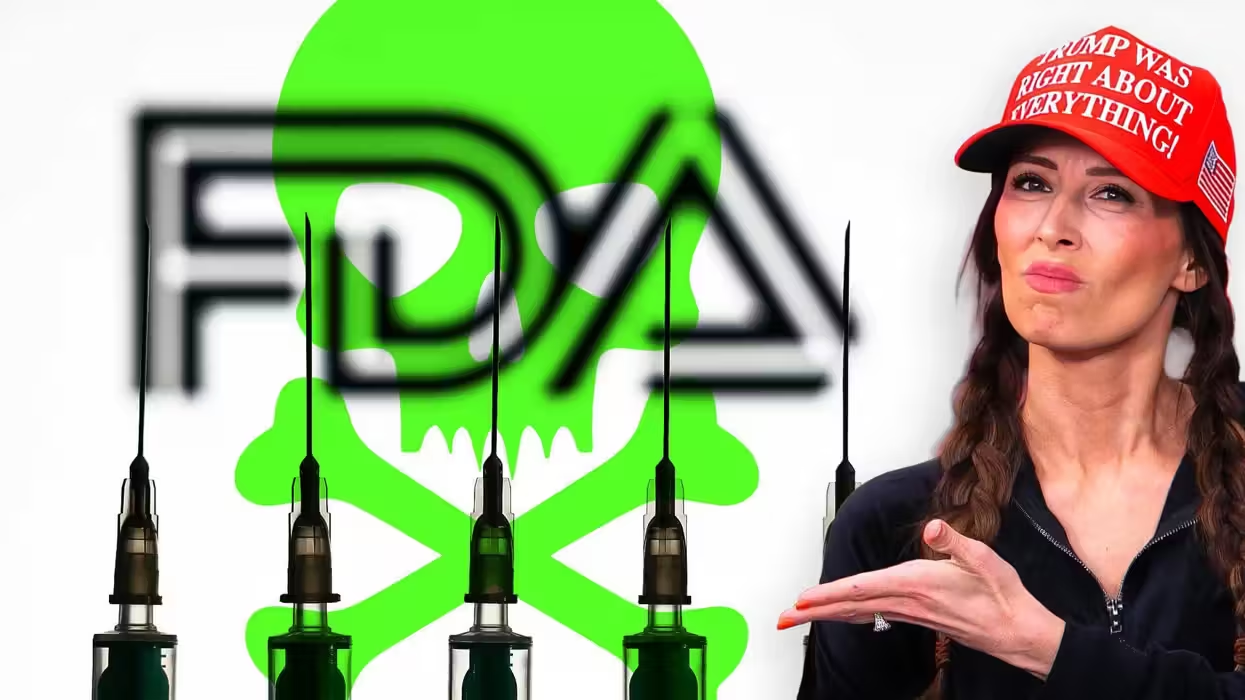On a Friday afternoon, while most people are thinking about their weekend plans, the Environmental Protection Agency (EPA) quietly released some very big news.
The agency wants to relax requirements for the renewable fuel standard (RFS) and change the federal mandate that forces gasoline makers to blend a certain percentage of renewable fuel into gasoline.
Specifically, the EPA proposed to reduce the blending requirement in 2014 from 16.55 billion gallons to 15.2 billion gallons, what it was in 2012. This is a serious blow to the ethanol industry, and it signals that Washington may be waking up to the pitfalls of the green energy mandate known as the RFS.
 This July 11, 2012, handout photo provided by the Renewable Fuels Association shows a Lawrence, Kansas, fueling station pump with various grades of fuel, including E15, which contains 5 percent more ethanol than the current 10 percent norm sold at most U.S. gas stations. E15 is sold in just 20 stations in six Midwestern states, but could spread to other regions as the Obama administration considers whether to require more ethanol in gasoline; it's cheaper and cleaner but it could damage older cars and motorcycles. The American Petroleum Institute has asked the Supreme Court to block sales of E15. The Court could decide as soon as Monday, June 24, 2013, whether to hear the ethanol case. (Photo: AP/Renewable Fuels Association, Robert White)
This July 11, 2012, handout photo provided by the Renewable Fuels Association shows a Lawrence, Kansas, fueling station pump with various grades of fuel, including E15, which contains 5 percent more ethanol than the current 10 percent norm sold at most U.S. gas stations. E15 is sold in just 20 stations in six Midwestern states, but could spread to other regions as the Obama administration considers whether to require more ethanol in gasoline; it's cheaper and cleaner but it could damage older cars and motorcycles. The American Petroleum Institute has asked the Supreme Court to block sales of E15. The Court could decide as soon as Monday, June 24, 2013, whether to hear the ethanol case. (Photo: AP/Renewable Fuels Association, Robert White)
One of the main drivers behind this announcement is the impending “blend wall” that was previously scheduled to take effect in 2014. This is the point at which the amount of ethanol required to be blended into Americans’ gas tanks exceeds the physical limit of the average vehicle (10 percent, or E10).
Before the EPA announcement, the RFS was on track to become even more stringent in the new year; meanwhile, Americans are consuming less gasoline because they are driving less and cars are becoming more fuel-efficient.
This announcement from EPA is not the first blow to the ethanol industry this week.
It’s on the heels of a new "AP" investigative report that highlights how federal ethanol subsidies have significantly damaged the environment. Lured by federal incentives for ethanol production, farmers have planted corn on vulnerable areas such as wetlands. According to the report, this has destroyed five million acres of land reserved for conservation over the course of the Obama administration — that’s more than the combined area of the Yellowstone, Everglades and Yosemite National Parks.
This is an important finding because liberal and environmental groups mainly support green energy programs such as the RFS and tax breaks for ethanol because they supposedly produce benefits for the environment. This report shows that these claims don’t match up with reality. If these groups and lawmakers were truly focused on helping the environment, then they should oppose the RFS and ethanol subsidies.
This environmental impact is on top of other harmful impacts of the RFS that "AFP" has highlighted before. This mandate gives farmers an incentive to direct their corn yields away from food and feedstock, as well as to reduce their production of other commodities such as soybeans and wheat, leading to higher food prices.
 In this July 20, 2013, photo, a plant that produces ethanol is next to a cornfield near Coon Rapids, Iowa. Government mandates to increase ethanol production have helped drive up corn prices leading to marginal land being farmed to produce the crop. In 2012, 44 percent of the nation's corn crop was used for fuel, about twice the rate seen in 2006, according to the Department of Agriculture. (AP Photo/Charlie Riedel)
In this July 20, 2013, photo, a plant that produces ethanol is next to a cornfield near Coon Rapids, Iowa. Government mandates to increase ethanol production have helped drive up corn prices leading to marginal land being farmed to produce the crop. In 2012, 44 percent of the nation's corn crop was used for fuel, about twice the rate seen in 2006, according to the Department of Agriculture. (AP Photo/Charlie Riedel)
Coupled together, the announcement from EPA and the AP report suggest that momentum is building in Washington to repeal green energy mandates like the RFS. To be sure, grants and loan guarantees are drying up, the main tax breaks for ethanol have also gone away, and momentum is building in Congress to allow the federal wind production tax credit (PTC) expire.
Fortunately, Rep. Bob Goodlatte (R-Va.) and Sen. John Barrasso (R-Wyo.) have introduced legislation that would fully repeal the RFS, which Congress should pass. (To learn more, read "AFP’s" letter of support for H.R. 1491 and S. 1195.)
–
TheBlaze contributor channel supports an open discourse on a range of views. The opinions expressed in this channel are solely those of each individual author.

 This July 11, 2012, handout photo provided by the Renewable Fuels Association shows a Lawrence, Kansas, fueling station pump with various grades of fuel, including E15, which contains 5 percent more ethanol than the current 10 percent norm sold at most U.S. gas stations. E15 is sold in just 20 stations in six Midwestern states, but could spread to other regions as the Obama administration considers whether to require more ethanol in gasoline; it's cheaper and cleaner but it could damage older cars and motorcycles. The American Petroleum Institute has asked the Supreme Court to block sales of E15. The Court could decide as soon as Monday, June 24, 2013, whether to hear the ethanol case. (Photo: AP/Renewable Fuels Association, Robert White)
This July 11, 2012, handout photo provided by the Renewable Fuels Association shows a Lawrence, Kansas, fueling station pump with various grades of fuel, including E15, which contains 5 percent more ethanol than the current 10 percent norm sold at most U.S. gas stations. E15 is sold in just 20 stations in six Midwestern states, but could spread to other regions as the Obama administration considers whether to require more ethanol in gasoline; it's cheaper and cleaner but it could damage older cars and motorcycles. The American Petroleum Institute has asked the Supreme Court to block sales of E15. The Court could decide as soon as Monday, June 24, 2013, whether to hear the ethanol case. (Photo: AP/Renewable Fuels Association, Robert White)






